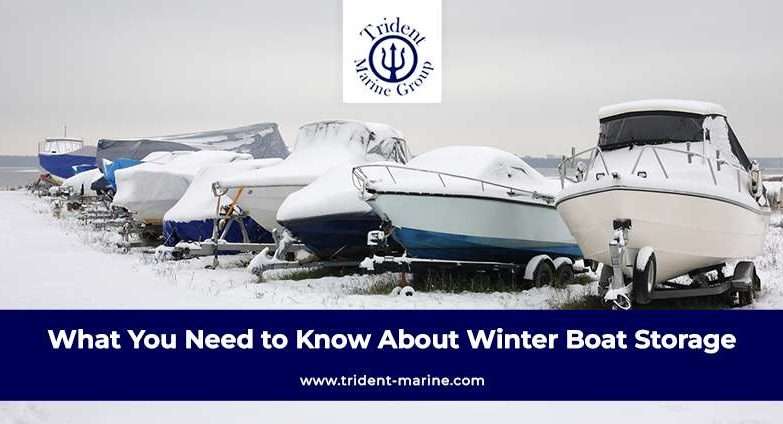What You Need to Know About Winter Boat Storage
As the boating season winds down and winter approaches, it’s time for boat owners to consider storage options to keep their boats safe through the colder months. Proper winter storage protects your vessel and ensures it’s ready when spring returns. With a variety of options available, even experienced boaters may feel uncertain about the best choice for winter boat storage. To help with this decision, read on for an overview of boat storage types, tips for choosing a facility, and guidance on winter preparation.
Types of Winter Boat Storage
For winter storage, marinas and boat yards offer both indoor and outdoor options, providing greater security than storing your boat at home and saving valuable space on your property. As you explore storage facilities, you’ll find a range of options, which can make it difficult to decide which best suits your needs. Here are some of the most common storage options available:
In-Water Boat Storage
If you live in a region that experiences mild winters and relatively calm water year-round, you may be able to keep your boat in its slips all year with minimal problems. This is a convenient option, as it allows you to leave your boat where it is without having to move it back and forth. However, this also leaves your boat susceptible to the elements, so this may not be a good option if you don’t plan on using your boat during the winter. If you decide to leave your boat in its slip year-round, make sure that you check on it regularly (particularly after storms) to look for any damage or leaks.
Use a Boat Lift
If your area experiences cold winters and you’re worried about the water freezing around your boat, you may still be able to store it at its slip with a boat lift. A lift allows you to store your boat safely out of the water without having to move it anywhere. While boat lifts are convenient and can protect your boat from freezing water and minor waves, they are not as secure as other storage options in the event of a heavy storm. This is because high winds and waves can shift your boat on the lift, potentially causing damage.
Outdoor Dry Boat Storage
If you’re worried about the damage wind, rain, and freezing water could cause to your boat at a slip, you should instead consider outdoor dry boat storage. This involves storing your boat in an outdoor dry facility, which usually involves storing it on a trailer. Many marinas offer dry dock facilities to store boats during the off-season, as storing boats away from the water can help protect them from the elements. Of course, boats stored outdoors, even in dry storage, will need proper protection, as your boat could still suffer damage if it is not properly covered and winterized.

Indoor Dry Boat Storage
The most secure (but most expensive) option is to winterize your boat in an indoor dry boat storage facility. Indoor storage facilities are often climate-controlled, which means that they offer the most protection. Your boat won’t require as much winterizing before storage since it won’t be exposed to the elements.
The ideal boat storage choice will ultimately depend on your budget and preferences. Identifying your preferred type of winter storage can simplify your search, helping you focus on facilities that meet your needs.
Tips for Choosing a Winter Boat Storage Facility
Once you know what type of winter boat storage you want, you can start researching options near you. Yet, with countless boat storage facilities in Annapolis, you may not be sure where to start your search. To help you narrow down your options, take a look at our top tips for choosing a boat storage facility.
Look for Security Features
One of the most important things you should look for in a boat storage facility is good security. You want to make sure that your boat is taken care of so you can sleep easy at night. A reliable storage facility should be fenced, have an advanced security system, and be monitored 24/7 to guarantee your boat is protected at all times.
Consider Access Hours
When comparing storage facilities, you should also consider their access policies. What hours can you check on your boat if/when you need to? Some storage facilities allow 24/7 access, while others have more limited hours. Depending on your schedule, this may be an important factor to consider.
Look At Reviews
While a storage facility may look nice, and a representative may say all the right things about their service quality, it is still important that you see what real customers are saying, as reviews could tell another story. Fortunately, a simple Google search can show you everything you need to know about how well-regarded a storage facility/marina is.
Do They Provide Boat Maintenance?
In the off-season, thinking about your boat’s upkeep or handling maintenance can feel unnecessary, especially when it’s not in use. Thankfully, numerous marinas and storage facilities offer maintenance services like battery checks and winterization, keeping your boat prepared for summer.

How to Prepare Your Boat for Winter
Once you’ve selected and reserved your winter storage spot, the next step is preparing your boat to handle the colder months. Winterizing helps protect it from freezing temperatures, preventing issues when the boating season returns. Some effective steps to prepare your boat for winter include:
Cleaning Your Boat
While it may sound odd to clean your boat when it is going to sit in storage all winter, this is an integral part of the winterization process. Dirt and grime left behind from the boating season can attract pests and lead to mold growth while your boat is in storage. Before your boat goes into storage, prepare it by scrubbing the decks, treating seats and wood trim to prevent mold, and checking all storage areas for dirt, water, and grime.
Filling the Tank (and Adding Stabilizer)
Believe it or not, it’s not good for your boat’s fuel tank to sit empty during the winter. In fact, experts recommend filling your fuel tank before storing it; however, you must leave a little space for potential expansion and contraction. Make sure that you add a fuel stabilizer to prevent the gasoline from oxidizing.

Changing the Oil
Before you put your boat away for the winter, you should also change the oil and filter, as this can help prevent rust and corrosion in your engine.
Removing and Charging The Battery
Finding a dead battery at the beginning of boating season can be frustrating. To avoid this situation, take proactive steps to maintain your battery while storing your boat. If you’re keeping your boat outside, first remove the battery and charge it fully before placing it in a location insulated from freezing temperatures.
To keep your battery in optimal condition throughout the off-season, charge it at least once a month. Alternatively, consider connecting it to a trickle charger, which will provide a consistent charge and prevent it from draining. By taking these steps, you can ensure your battery remains healthy and ready for action when boating season returns.
Covering Your Boat
Cover your boat to keep out dirt, dust, moisture, and vermin. Instead of simply throwing a tarp over it, fully seal your boat from contaminants by shrink-wrapping it. Shrink-wrapping provides optimal coverage and protection from the elements.

Access the Best Winter Boat Storage Solutions
Take the right steps to prepare your boat for winter, including finding a secure boat storage facility and properly winterizing it so your boat will be ready to go when spring arrives. For premium winter boat storage in Annapolis, check out the marinas by Trident Marine Group. With high-quality facilities and comprehensive services, your boat will be well-cared for throughout the season. Contact us to learn more about our storage and winterization options.

